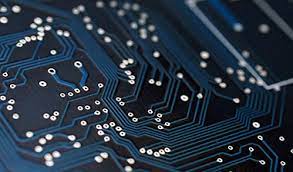Electronics is a branch of physics that specializes in the study of electronics, electronic devices, electronic circuits, and other topics. It utilizes electronic components such as "active devices" and related "passive devices" to form the interconnection technology of circuits.

Circuit boards electronics
Electronics is a branch of physics that specializes in the study of electronics, electronic devices, electronic circuits, and other topics. It utilizes electronic components such as "active devices" (such as vacuum tubes, diodes, transistors, and integrated circuits) and related "passive devices" to construct the interconnection technology of circuits.
The nonlinear characteristics of active devices and their ability to control electron flow can amplify weak signals, making circuit board electronics widely used in information processing, communication, and signal processing. The switching characteristics of electronic devices make it possible to process digital signals. Interconnection technologies such as circuit boards and electronic packaging, as well as various forms of communication infrastructure components, have improved circuit functionality and made connected components a functioning system.
Circuit board electronics are different from electrical and electromechanical science and technology. Electrical and electrical science and technology are disciplines related to the generation, distribution, switching, storage, and conversion of electrical energy, converting from other forms of energy to electrical energy through wires, motors, generators, batteries, switches, relays, transformers, resistors, and other passive devices.
In 1897, Joseph Thomson discovered the existence of electrons, which was the origin of electronics. Early electronics used vacuum tubes to control the flow of electrons, but they had drawbacks such as high cost and large volume. Nowadays, most electronic devices use semiconductor devices to control electronics. Vacuum tubes still have some special applications, such as high-power RF amplifiers, cathode ray tubes, professional audio equipment, and multi-cavity magnetrons in microwave equipment.
The research and related technology of semiconductor devices is a branch of solid-state physics, but designing and building electronic circuits to solve practical problems is the scope of electronic engineering.
Circuits can be roughly divided into two categories: analog circuits and digital circuits. The voltage and current signals of the former are analog signals in the form of continuous functions, while the signals of digital circuits are discrete digital signals, which are mostly represented by 0 and 1. However, many circuits include both analog and digital circuits.
Analog circuit
The voltage or current in the analog circuit is an analog signal in the form of a continuous function. It can be divided into Linear circuits and nonlinear circuits.
In analog circuits, the current and voltage signals of resistors, capacitors, inductive elements and transformers are in a linear relationship. Such elements are called linear elements. Circuits composed of only linear elements are called Linear circuits. The linear circuit is easy to analyze.
Components whose current and voltage signals are not linear are called nonlinear components, such as mixers, modulators, vacuum tubes, transistor amplifiers, operational amplifiers, and oscillators. If the circuit has nonlinear components, it is difficult to analyze them. If the voltage and current are near a certain value (referred to as the working point), small signal models can be used to simulate the nonlinear components with linear components to simplify analysis and calculation.
The components of analog circuits can also be divided into active and passive components. Active components belong to nonlinear components, such as transistors, vacuum tubes, and operational amplifiers. The characteristics of many analog circuits are generated by the characteristics of active components.
There are few pure analog circuits in current devices, and many analog circuits are combined with digital or even microprocessor technology to improve their performance. This type of circuit can also be classified as a "mixed signal" circuit. Some circuits are difficult to distinguish between analog circuits and digital circuits. For example, the input of a comparator is an analog signal, but its output only has two levels, which are digital signals.
Digital circuit
There are several different voltage levels in digital circuits, which are commonly used to implement Boolean algebra and are the foundation of all digital computers. For engineers, when discussing digital circuits, "digital circuits", "digital systems", or "logic" are often interchangeable.
Circuit analysis is the process of converting a circuit into a system composed of many unknowns. The physical quantities in the circuit, such as the voltage of a node or the current of a path, become unknowns in the system and then study how to solve the system. The system may be linear or nonlinear. SPICE circuit simulator is a commonly used analysis tool for circuit analysis.
Modern electronic engineers can use pre-defined modules for circuit design, including power supplies, semiconductor components (such as transistors), and integrated circuits. Electronic design automation software includes circuit diagram-making software and printed circuit board design software. Common electronic design automation software includes NI Multisim, Cadence (OrCAD), Pads, Altium Designer (Protel), etc.
Electronic components refer to the components used in an electronic system, which can affect electrons or their associated electric or magnetic fields in the manner required by the electronic system. Electronic parts are generally designed to be connected. Most of them are fixed on the printed circuit board (PCB) by soldering and finally form a circuit with a specific function (such as an amplifier, radio receiver, or oscillator). Electronic components can be discrete, with individual packages or more complex components such as integrated circuits. Common electronic components include capacitors, inductors, resistors, diodes, transistors, etc. Electronic components are generally classified as active components (such as transistors or thyristors) and passive components (such as capacitors, resistors, and inductance components).
In the research of circuit board electronics, mathematical methods are indispensable. If you want to be familiar with electronics, you need to be familiar with the mathematics related to circuit analysis and the theory of electromagnetism.